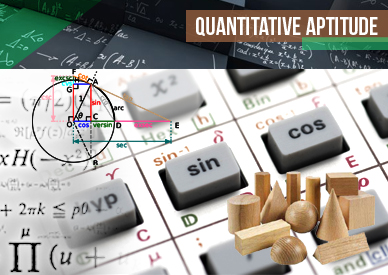Important DI Table for SBI PO Mains Set – 75
Want to Become a Bank, Central / State Govt Officer in 2020?
Join the Most awarded Coaching Institute & Get your Dream Job


Now Prepare for Bank, SSC Exams from Home. Join Online Coure @ lowest fee
Lifetime validity Bank Exam Coaching | Bank PO / Clerk Coaching | Bank SO Exam Coaching | All-in-One SSC Exam Coaching | RRB Railway Exam Coaching | TNPSC Exam Coaching | KPSC Exam Coaching
Important DI Table for SBI PO Mains – 75
Directions (1-5): A school has four sections A, B, C, D of Class IX students.
The results of half yearly and annual examinations are shown in the table given below.
| Result | No. of Students | |||
| Sec-
A |
Sec
B |
Sec
C |
Sec
D |
|
| Students failed in both Exams | 28 | 23 | 17- | 27 |
| Students failed in half-yearly but passed in Annual Exams |
14 | 12 | 8 | 13 |
| Students passed in half-yearly but failed in Annual Exams |
6 | 17 | 9 | 15 |
| Students passed in both Exams | 64 | 55 | 46 | 76 |
1. If the number of students passing an examination be considered a criteria for comparisons of difficulty level of two examinations, which of the following statements is true in this context?
(a) Half yearly examinations were more difficult.
(b) Annual examinations were more difficult.
(c) Both the examinations had almost the same difficulty level.
(d) The two examinations cannot be compared for difficulty level.
(e) None of these
2. How many students are there in Class IX in the school?
(a) 336
(b) 185
(c) 335
(d) 430
(e) None of these
3. Which section has the maximum pass percentage in at least one of the two examinations?
(a) A section
(b) B section
(c) C section
(d) D section
(e) None of these
4. Which section has the maximum success rate in annual examination?
(a) A section
(b) B section
(c) C section
(d) D section
(e) None of these
5. Which section has the minimum failure rate in half yearly examination?
(a) A section
(b) B section
(c) C section
(d) D section
(e) None of these
Direction (6-10): The following table shows the number of new employees added to different categories of employees in a company and also the number of employees from these categories who left the company every year since the foundation of the Company in 1995.
6. What is the difference between the total number of Technicians added to the Company and the total number of Accountants added to the Company during the years 1996 to 2000?
(a) 128
(b) 112
(c) 96
(d) 88
(e) None of these
7. What was the total number of Peons working in the Company in the year 1999?
(a) 1312
(b) 1192
(c) 1088
(d) 968
(e) None of these
8. For which of the following categories the percentage increase in the number of employees working in the Company from 1995 to 2000 was the maximum?
(a) Mangers
(b) Technicians
(c) Operators
(d) Accountants
(e) None of these
9. What is the pooled average of the total number of employees of all categories in the year 1997?
(a) 1325
(b) 1195
(c) 1265
(d) 1235
(e) None of these
10. During the period between 1995 and 2000, the total number of Operators who left the Company is what percent of total number of Operators who joined the Company?
(a) 19%
(b) 21%
(c) 27%
(d) 29%
(e) None of these
2. How many students are there in Class IX in the school?
(a) 336
(b) 185
(c) 335
(d) 430
(e) None of these
3. Which section has the maximum pass percentage in at least one of the two examinations?
(a) A section
(b) B section
(c) C section
(d) D section
(e) None of these
4. Which section has the maximum success rate in annual examination?
(a) A section
(b) B section
(c) C section
(d) D section
(e) None of these
5. Which section has the minimum failure rate in half yearly examination?
(a) A section
(b) B section
(c) C section
(d) D section
(e) None of these
Direction (6-10): The following table shows the number of new employees added to different categories of employees in a company and also the number of employees from these categories who left the company every year since the foundation of the Company in 1995.
6. What is the difference between the total number of Technicians added to the Company and the total number of Accountants added to the Company during the years 1996 to 2000?
(a) 128
(b) 112
(c) 96
(d) 88
(e) None of these
7. What was the total number of Peons working in the Company in the year 1999?
(a) 1312
(b) 1192
(c) 1088
(d) 968
(e) None of these
8. For which of the following categories the percentage increase in the number of employees working in the Company from 1995 to 2000 was the maximum?
(a) Mangers
(b) Technicians
(c) Operators
(d) Accountants
(e) None of these
9. What is the pooled average of the total number of employees of all categories in the year 1997?
(a) 1325
(b) 1195
(c) 1265
(d) 1235
(e) None of these
10. During the period between 1995 and 2000, the total number of Operators who left the Company is what percent of total number of Operators who joined the Company?
(a) 19%
(b) 21%
(c) 27%
(d) 29%
(e) None of these



